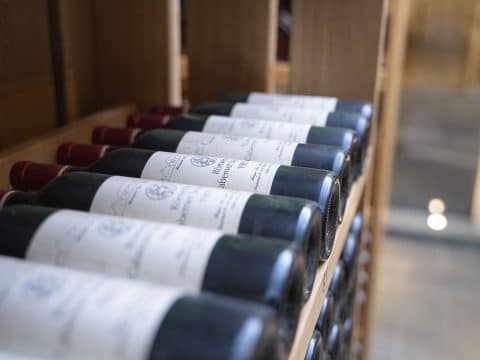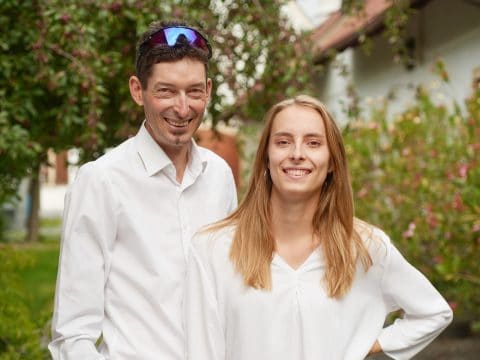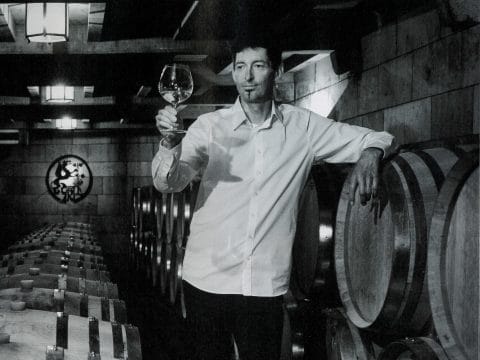Mature Chardonnays
Press
Can you speak Burgundian?
by Peter Schleimer
Chardonnay has had a chequered career in Austria…
… if it did briefly achieve something of a cult status in the 1990s, the current crowd of winelovers’ affection for the noble Burgundian grape has cooled off considerably. And that’s not right—there are a few specialists who nowadays are producing particularly expressive wines. The top Chardonnays from the last decade are still capable of impressing—our gustatorial retrospective confirms this.
Chardonnay is responsible for some of the most expensive white wines in the world—Montrachet & Co—but is also globally one of the most widely planted fine-wine grapes. In the first place this is due to its astounding capability to lend itself to a great diversity in matters of viticulture as well as winemaking—also, Chardonnay can produce pleasing wines in solid quantities from less than ideal vineyard sites.
For a long time, Chardonnay held little interest for Austria. Not that the vine was absent from modern viticulture—it’s been planted here at the very latest since the end of the 19th century, but likely for a hundred years or more before that in Styria (as Morillon). For along time it was thrown into the same pot as Pinot Blanc. The 1999 national survey of vineyards indicated a total area under vines of 2,936 hectares for the two varieties—it wasn’t until the 2009 survey that Chardonnay was listed separately with 1,431 hectares.
The majority of the wine community first became aware of the variety in the 1990s, and its ascent soon gathered momentum. Highly valued by an ambitious generation of Styrian winegrowers like Gross, Polz, Sattler and Tement as well as specialists like Bründlmayer, Kollwentz, Reinisch, Velich and Wieninger, Chardonnay/Morillon quickly achieved cult status. At that time nearly always matured in new barriques after malolactic fermentation, the variety presented Austria with a new type of wine. But the high times for Chardonnay didn’t last too long, as the enthusiasm for oak-laden creamy wines in Austria waned considerably during the last decade. In the meantime, much had changed stylistically—the proportion of new oak barrels and the amount of time wines spent in them was significantly reduced. Also significant adaptations in matters of malolactic fermentation, extended lees-contact and other cellar-practices became more or less the rule. Current examples tend to be less corpulent and oaky than earlier Chardonnays, while elegance and expression of the vineyard site have moved into the forefront.
a fascinating tasting…
Even though a few varietal specialists have promulgated a sense of style, stylistic questions in matters of Austrian Chardonnay are more a private matter—it’s much easier to speak of the winemaker’s thumbprint than about an expression that’s typical for Austria. This nevertheless has its positive aspects, even if the number of domestic producers who don’t just ‘have Chardonnay on their lists,’ but work seriously at making a statement with the variety, is somewhat limited.
Now as before there’s quite a bandwith of styles, ranging from zaftig oak-bombs to compact and firm wines, then moving back toward luxuriant and full-bodied examples—finished dry, but stylistically reminiscent of Spätlese and Auslese. And which style one prefers is to a certain extent a matter of taste.
In our tasting—so extensive in its scope that it was conducted in two sessions, very kindly hosted by the Wieninger and Johanneshof Reinisch estates—the structured and drier wines were more often successful than the more corpulent examples with their occasional propensity to show residual sugar. And certain estates excelled, so far as the entire performance was concerned: Gesellmann, Kollwentz, Tement and Sattler supplied us with particularly fine series of wines. This was also was true of Neumeister and Muster.gamlitz, while Bründlmayer, Schellman, Reinisch, Wieninger and Polz each had at least two, sometimes several excellent entrants in the running. The colossal surprise was delivered by Hannes Schuster, with a bottle of Chardonnay 2002 from the author’s own private cellar. At the time of our tasting, this one shone the brightest. (The variety is no longer in the programme at the estate in St Margarethen.)
A number of highly regarded Chardonnays were going through transitional and moody phases, and therefore could not show their full potential, and a couple bottles were not in ideal shape, for example Zieregg 1997 from Tement, a couple of the Wieninger wines, as well as others from Polz, Gross, Prieler and Reinisch. In some of these cases there’s a significant gain in expressiveness to be expected—just a question of time or of a better bottle. And of course the instances of cork-spoiled bottles were indeed painful, especially with the older wines—particularly Bründlmayer’s legendary 1985, both older wines (‘88 and ‘92) from Mantler, Kollwentz 1994, Lackner-Tinnacher 2001 and Wieninger 2002 & 2004. Corked wines and wines that were clearly oxidised or going through a problematic phase (in our opinion) have been withheld from comment.
And if certain older wines were disappointing, there were also a few that numbered among the most impressive: examples are the magnificent 1992 from Bründlmayer (the legendary 1985 suffered from a severe cork-taint) or the elegant and refreshing 1994 from Walter Skoff, Kollwentz’s great Tatschler 1999 as well as the 2000ers from Neumeister and Schellman, 2001ers from Sattler and Kollwentz—and then there was a remarkable bevy of fine 2002s; next to Schuster was a wonderful Zieregg from Tement. Also the most recent ten vintages have produced many outstanding wines—most notably Gesellman 2005, Muster 2006 and Tement 2007.
The ringers didn’t make much of a splash—not even the 1993 Montrachet from Chartron et Trebuchet—certainly the best of these was the 2006 Chardonnay from Littorai in Sonoma.
Participants in the tasting were: Erwin Goldfuss, Rüdiger Pröll, Peter Schleimer, Hermann Botolen and our hosts Hannes Reinisch and Fritz Wieninger, as well as Andi Kollwentz, Armin Tement and Sepp Knorr representing Bründlmayer.
Evaluations are those of the Vinaria team.


